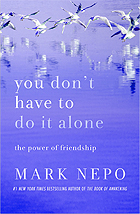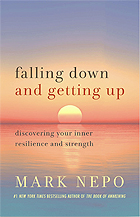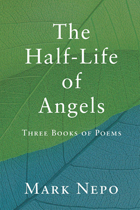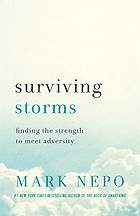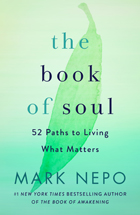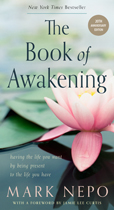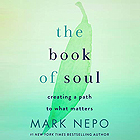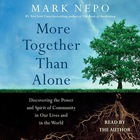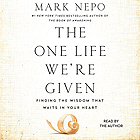| Books |  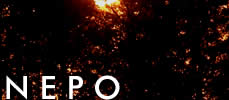  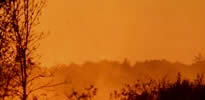 |
|
The Fifth Season ST. MARTIN'S ESSENTIALS, July 15, 2025 Mark Nepo has a gift. Once again, he combines insight, perspective, and poetry with such propulsive force that it lifts the soul. I will pull this book off my shelf again and again. Whatever your age, if living fully into the gift of life is your hope, this book will serve you well. Order from an online bookseller:
Amazon
BOOK DESCRIPTION As the years go by, the question for each of us becomes more and more real: What does it mean to age? Despite the limitations that come as the body wears down, there are many gifts to inhabit by aging. So much is gained and so much is shed along the way. Now in his seventies, poet and philosopher Mark Nepo explores the rhythms of aging in the second half of life. More than ever, we are called to live a creative life as we age, which leads us to inhabit what the Chinese call the fifth season, that time in late summer when the glare is gone and only the color of things as they are can reach us. And so, the second half of life is a turning point, a time of integration and transformation that helps us make sense of our experience. All seasons lead to this season, all experiences to this understanding of experience. In truth, we each must face living and dying from the inside of the one life we are given. But we can share the journey, which is the purpose of this book, to be a companion in your effort to enter the fifth season of your life. "I confess, very simply, that it is humbling to age and exciting to be fully here. After so many years, I feel like a man who has been turned inside out by life and this has made me a student of the inside of everything. I think this is the journey of aging: to become a student of the inside of everything. And all along, I have worked to convey what I keep learning from the inside of everything. For what I've discovered there seems the blessing of life. I think, as we age, we meet in this inner field of presence, where there's very little left in the way."
EXCERPTS A SHIFT IN HORIZONS One of the ever-present challenges of aging is to accept that many of the ways we have engaged the world - that worked for decades - no longer work. As we enter the vast continent of aging, we are called to shift the way we perceive the world and how we move through it. For the geography changes and traveling there requires a different way of seeing. A penetrating example is how, for most of our lives, we are taught to look forward, to imagine horizons and then go after them. Yet, along the way, love and suffering make us realize that the gift of life is always where we are. Still, we work toward dreams and goals, which we set ahead of us like mental horizons, hoping for some final reward. Eventually, as we age, the effort and habit of looking forward is no longer life-giving, simply because the years ahead of us keep diminishing. There is less forward there to work toward. We are ushered, then, into a shift of horizons, which can be disorienting. Our first reflex is to turn around and look to our past. This is the horizon of nostalgia. But nostalgia only glorifies the past, which doesn't help us live in the present. More deeply, we are challenged to neither look solely forward nor solely backward, but to make our elder horizon all encompassing; that is, to broaden and deepen the extent of our horizon in all directions so it can confirm the foundational truth of a lifetime. In this regard, I don't want to see my first love or childhood friend just to conjure the past, but to evoke a relational context between then and now. So I can feel what those relationships first touched in me and have it inform and deepen my sense of living in the present. Likewise, we can still work toward dreams and goals, not to get anywhere, but so we can, again, be more alive for their engagement - now. SAYING YES TO LIFE So much of our vitality depends on our ongoing commitment to say yes to life. This has more to do with acceptance than obedience, and more to do with being real than being good. Saying yes to life depends on the vow to follow what is true. And so, we're often challenged to say no to what's entangling and false in order to follow what is true. When Albert Schweitzer left his teaching position in Germany to go to medical school in order to start a hospital in Africa, he was saying yes to life. When Walt Whitman decided to be a volunteer medic in the Civil War, committed to treating the wounded of both sides, he was saying yes to life. When Rosa Parks refused to give up her seat on that bus in Montgomery, Alabama, she was saying yes to life. And in the Norse tale, when Kalavalah says to the wizard "No, this time for me" and breaks the spell she's been under for nine hundred years, she is saying yes to life. When I wheezed my way through the night as a child with asthma, I was saying yes to life. When I studied the haftorah for my bar mitzvah as a boy, mesmerized by the ancient chants, I was saying yes to life. When I said yes and no a dozen times in my journey through cancer, I was saying yes to life. When dizzied by the stark elements north of the Continental Divide which humbled me to come back into the world, I was saying yes to life. And when I stayed the course with counseling to undo the creases in my soul, I was saying yes to life. In truth, every time we open our heart and listen with no agenda for the metaphor or story that is waiting nearby, we are saying yes to life. How, then, have you been called to say yes to life? What does this mean to you? And what does saying yes to life require of you? As we age, as our time on Earth thins toward the horizon, this simple, ongoing commitment to being here becomes more and more direct and crucial. The world and all that flows through it is more and more present in whatever small thing is before us, when we can say yes and hold. LIVING A CREATIVE LIFE Creativity never leaves us. Its call simply keeps changing. And more than what we create, we are created and shaped by how much we give of ourselves to what we are called to. It is an inner corollary to Newton's third law of motion that for every action, there's an equal and opposite reaction. For every engagement, there's an equal and returning engagement from life. For every wholehearted leaning in, life leans back into us, bringing us more alive. More than the push to achieve and produce great art, we are called to live a creative life. Just as we need oxygen to breathe, we need the creative flow to keep our heart alive. This is especially important as we age. To live a creative life sustains our inner health. When I was a boy, eight or nine years old, I remember sitting on our basement steps, watching my father work steadily in silence on his wooden half models. He didn't know I was watching. His basement was his creative sanctuary. During this time, he was absorbed in making half models of sailing ships from the 1800s. He would find the blueprints and make the models to scale. On this weeknight in fall, he was threading the minute rigging with a tweezer. I had never seen anyone so focused. His attention and care revealed a magnetism of creativity that I would want and follow for the rest of my life. He never talked about it, but I learned so much from watching him give his all. I realized, years later, that he had taught me about the secret life of detail: how caring completely about the smallest thing will bring the Mysterious Wholeness of the Universe into view. Even more profound, I realized by quietly watching that night that giving our all is really about immersion, not excellence. If we immerse ourselves, excellence will be a likely by-product. But the true reward for immersion is our experience of aliveness and Oneness. These lessons offer much more than how to produce good work. They offer us a lifeline to staying vital and awake. What does it mean, then, to live a creative life? I think it means that we stay openhearted and wholehearted. It means that when we step toward life, life will step toward us. It means that everything before us is waiting for our inquiry and participation. It means that engagement with curiosity is what connects us in the Web of Relationship. When connected in that web, we are brought alive, kept alive, made tender and grateful. In daily terms, this calls on us to initiate our effort toward everything living. For it's this initiatory effort that breaks our inertia and isolation. And to break our isolation, especially as we age, is crucial to our well-being. So, I encourage you to follow your curiosity, to give yourself to whatever detail calls you. I urge you to commit your initiatory effort in all directions. It will keep the life-force flowing.
Reviews We are clumsy when it comes to aging into wisdom in the West, which is where Nepo's book breaks ground. Storytelling, accompaniment, and respect for multiple spiritual paths mark these beautiful chapters. I count on one hand the classics of spirituality for life's later stages, and The Fifth Season is now one of them. There is such wisdom and care and attentiveness in these profound pages. Such an honoring of aging, which our culture so desperately needs. What beautiful insights. Over the years, Mark Nepo has been a deeply attentive student of "the inside of everything." I know of no better guide to that uncharted vastness that animates all life. In this magnificent book Mark, now in his mid-seventies, helps us explore aging from the inside out. Drawing on personal experience, on stories of people he has known, on his deep understanding of a range of wisdom traditions, and on his poetic sensibilities, he celebrates the light that comes with age and sheds light in places where so many fear the darkness. Whatever your age, if living fully into the gift of life is your hope, this book will serve you well. I am always moved by the grace and simplicity with which Mark Nepo guides his readers to be more awake and to find their way back to themselves. In his new book, Mark offers a way to walk in the landscape of aging, to weave together the threads of life and death, to increase our receptivity when noise gives way to silence. With the wisdom of one who has real soul awareness, he calls to the creativity that is within all of us, how it allows the song of our soul to be heard in its wonder, beauty and sorrow. Listening to his words invites us to be fully awake to the mystery which age brings to each of us. Mark Nepo is a master teacher, a benevolent soul, and his style of weaving story with poetry, with myth and modern life is transformative. In this luminous meditation on aging and creating, beloved poet Mark Nepo shows us how to fully live: with tenderness and passion, with a willingness to let go of our obsession with past and future in favor of a vivid curiosity about the present moment. Through stories and teachings, poetry, and questions for reflection, Mark has rekindled my excitement about the adventure of growing old. Regardless of your chronological age, these pages brim with nourishment for your journey home to your most radical aliveness. What a treasure - his writing is magnificent. Illuminating, encouraging, heartening: a hymn to aging that is grounded in simplicity as well as truth. I am thrilled and inspired by it. This meal of words speaks directly to the wild depth and expansive breadth of consciously growing into our actualized, humble, joyous Self. Read this book now. Be flooded with abundance, gratitude, and intimacy with your own life. In much of our world, aging is thought of as a disease to avoid. But as Mark Nepo beautifully shows, aging can be a process of transformation and expansion. The Fifth Season is an essential guidebook for how to explore your inner world, embrace the many gifts of aging, and live more fully. Mark's invitation to age in a sweet, sacred, and conscious way is a delight, as he encourages us to closely examine our gifts, our myths, and to walk this path with courage. […] Want to feel good about aging? Read The Fifth Season. This is an important book for befriending life, embracing others, continuing to grow, and staying close to people in the final decades of life. As in all of Nepo's work, meaning, and transformation are at the center. Here, grace also takes center stage. As always, Nepo writes in a way that speaks for all of us.
A CONVERSATION WITH MARK ABOUT HIS NEW BOOK , QUESTION: What led you to write this book? QUESTION: Can you explain the title, The Fifth Season? QUESTION: Early in the book, you use the metaphor of a meteor hurtling toward Earth. Can you share that here? Ultimately, if faced tenderly and truthfully, aging is, as the Jungian analyst Helen Luke describes, a journey into simplicity. This feels somewhat familiar to me because, being a poet and a cancer survivor, I have spent a lifetime looking for the simple seams of life that reveal what is essential and enduring.
To be clear, the goal in facing aging is not to beat it, or duck it, or run from it, or even to reframe it, or minimize it. The goal in facing aging is to live more fully the closer we get to death, so we can die with no feeling left unfelt, and no voice of life left unheard, and no thing in this world left unloved. Not surprisingly, this is also a good way to live. QUESTION: Why do you feel living a creative life is essential as we age? QUESTION: You offer what you call "Your Profile in Aging" in the book. Can you speak more about this? QUESTION: Can you talk more about the constricting and expanding rhythms of aging that you explore? And so, aging requires a different set of skills. Not to turn from the difficulties or to reframe or rationalize them. But to balance the constriction with expansion and the limitations with the grace of simplicity. We are challenged to face life in both directions and inhabit the corridor of aliveness between them. In truth, the expansion of being and the grace of simplicity help us to meet the limitations and constriction of getting older. How we might do this is what this book explores. QUESTION: You write about a shift in horizons that comes with aging. What do you mean by this? A penetrating example is how, for most of our lives, we are taught to look forward, to imagine horizons and then go after them. Yet, along the way, love and suffering make us realize that the gift of life is always where we are. Still, we work toward dreams and goals, which we set ahead of us like mental horizons, hoping for some eventual reward.
Eventually, as we age, the effort and habit of looking forward is no longer life-giving, simply because the years ahead of us keep diminishing. There is less "forward" there to work toward. We are ushered, then, into a shift of horizons, which can be disorienting. Our first reflex is to turn around and look to our past. This is the horizon of nostalgia. But nostalgia only glorifies the past, which doesn't help us live in the present.
More deeply, we are challenged to neither look solely forward nor solely backward, but to make our elder-horizon all encompassing; that is, to broaden and deepen the extent of our horizon in all directions so it can confirm the foundational truth of a lifetime. QUESTION: What is your hope for anyone engaging with this book? |



|

